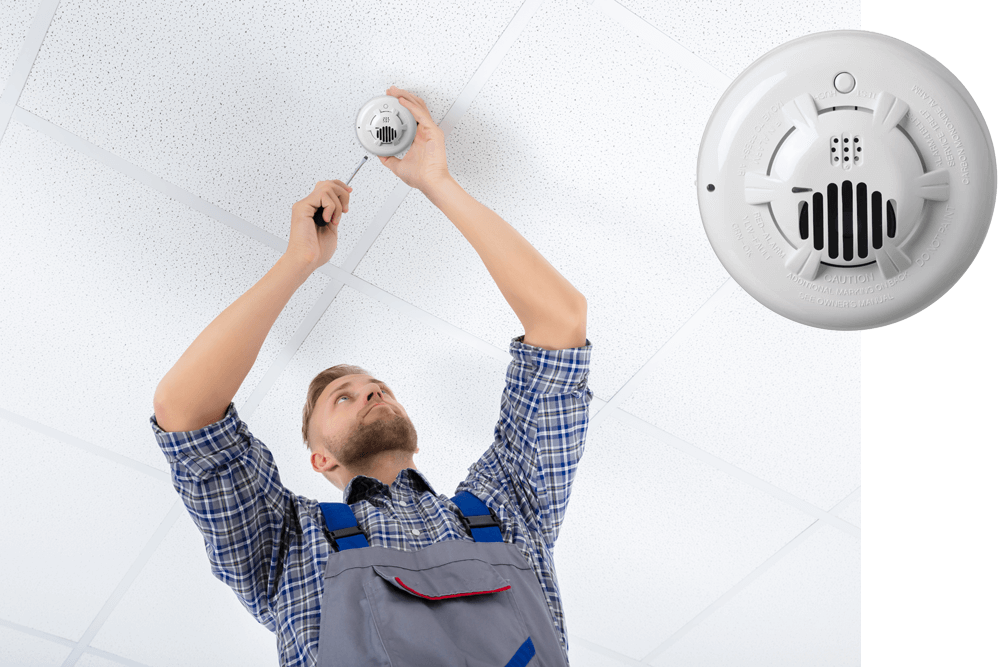Where Should Smoke Alarms Be Installed in Your Home?
Nothing is more valuable than the safety of your family. Properly installed and maintained smoke alarms plays a major role in preventing a house fire. The effects of a house fire can be emotionally, physically, and financially devastating. Knowing where a smoke alarm should be installed could mean life or death.
Approximately 90% of homes in the United States have at least one smoke alarm. These alarms are not always properly maintained and, as a result, may not be the quickest resource for help in an emergency. In recent years, more than 50% of deaths were caused by fires in homes without these devices installed.
Guardian Alarm’s rapid detection devices and 24/7 monitoring are the best solutions to keep you, your family, and your home safe before disaster strikes.
Where Should You Install Smoke Alarms?

Ideally, our homes should have smoke alarms installed inside every bedroom, outside each sleeping area, and on every level of the home, including the basement. On levels without bedrooms, install smoke alarms in the living room or near the stairway to the upper level. Wall-mounted smoke alarms should be installed no more than 12 inches away from the ceiling. If you have ceilings that are pitched, alarms should be within three feet of the peak but not within the apex of the peak.
Install basement smoke alarms on the ceiling at the bottom of the stairs leading to the next level. Keep in mind if you’re installing a smoke alarm around the kitchen, it should be at least 10 feet from a cooking appliance to minimize false alarms when cooking.
In addition to smoke alarms, you should also install monitored carbon monoxide alarms on each floor of your home.
Where Should You Install Carbon Monoxide Alarms?
To get the best reading carbon monoxide alarms must be installed at least five feet off the ground. Carbon monoxide is a colorless, odorless, tasteless, and toxic gas produced by any fuel-burning device. All fuel-burning appliances, vehicles, tools, or other devices have the potential to produce dangerous levels of carbon monoxide. In the event of carbon monoxide entering your home, it’s crucial that you get outside immediately.

Here are some examples of things in your home that can emit carbon monoxide:
- Fireplaces and woodstoves
- Gas-fueled furnaces
- Gas-fueled power tools
- Gas dryers, stoves, and water heaters
- Space heaters
- Tobacco smoke
How Often Should You Test Smoke & Carbon Monoxide Alarms?
Since the dangers of smoke and carbon monoxide pose such threats to your home, we urge you to receive monthly maintenance checkups to make sure that your alarms are connected and working properly. We also recommend that the batteries of these devices should be replaced at least once a year, even if there’s no existing indication that they’re not working.
Guardian Alarm’s expert security consultants are here to help you learn what parts of your home may be the most vulnerable. During your free consultation, we’ll suggest the best placement for your devices based on the size of your home. Then, during our professional installation, we’ll train you on your new system and offer local service and maintenance for years to come.

